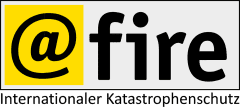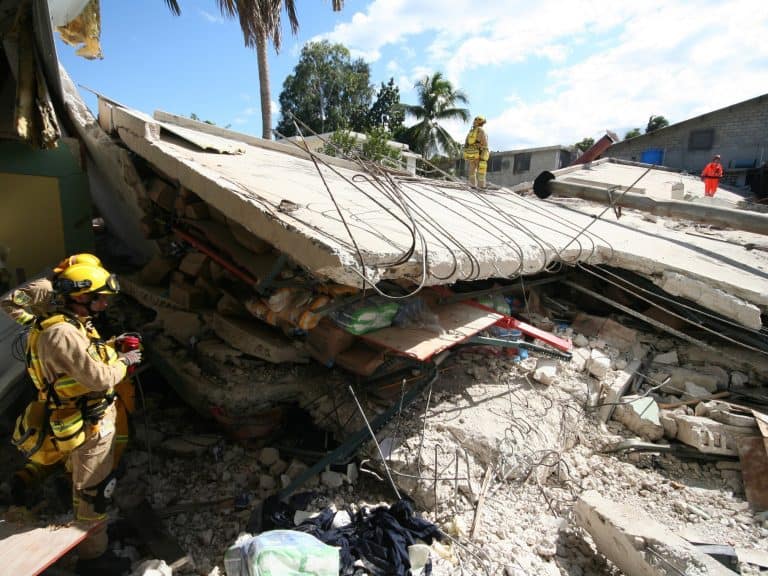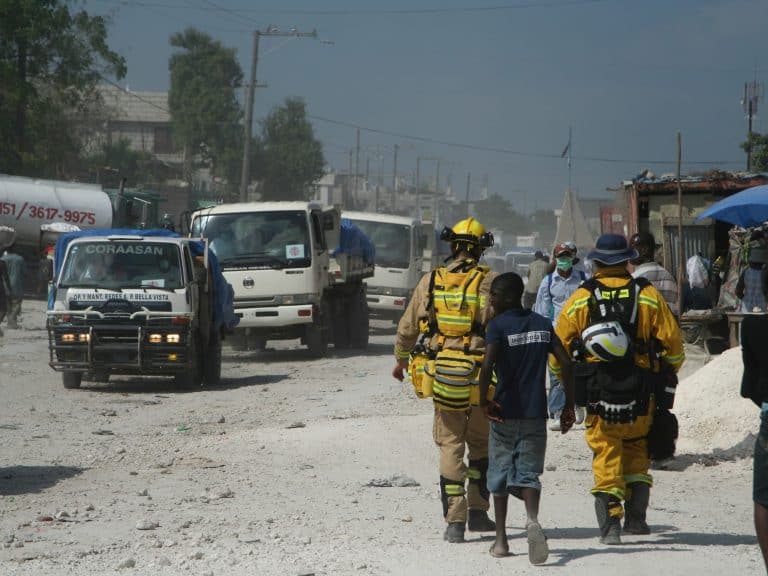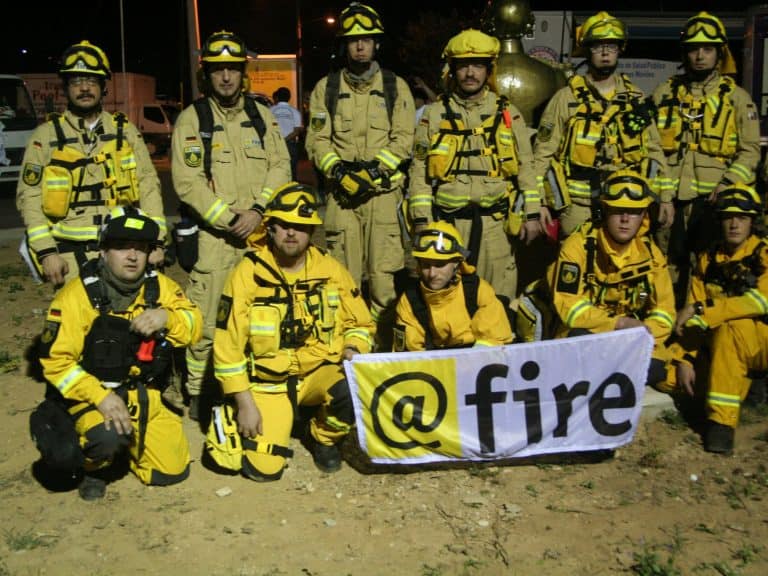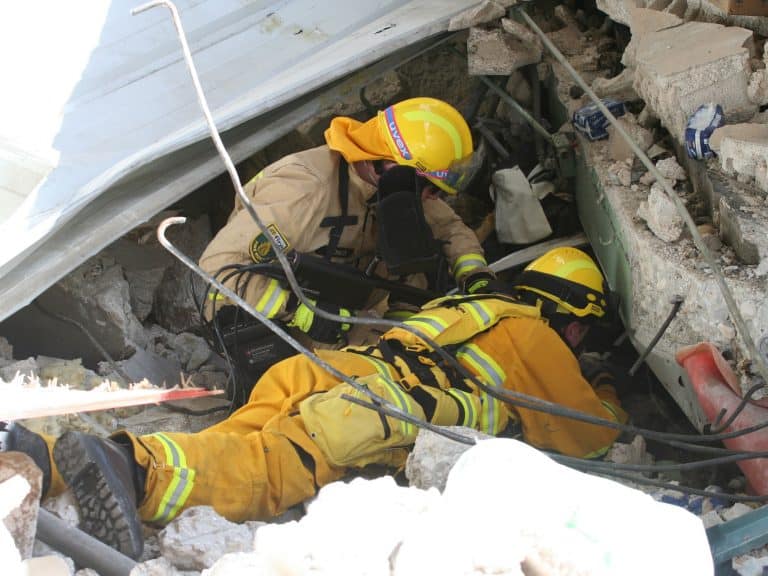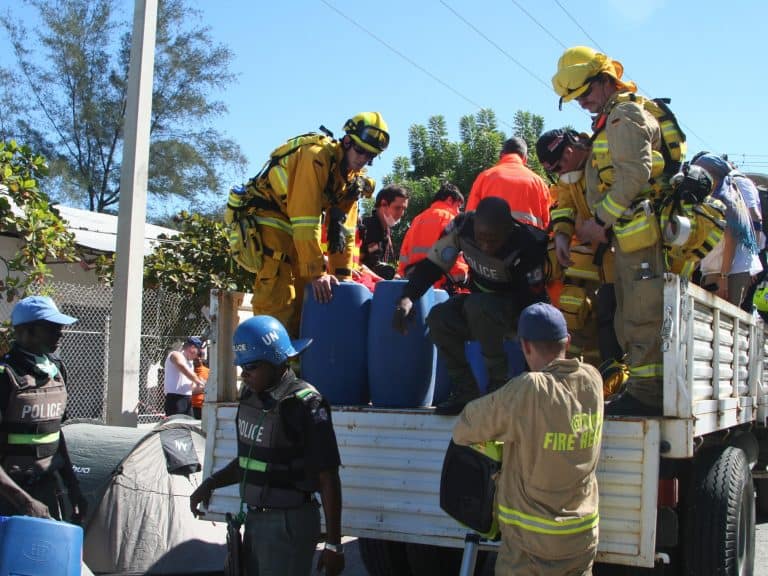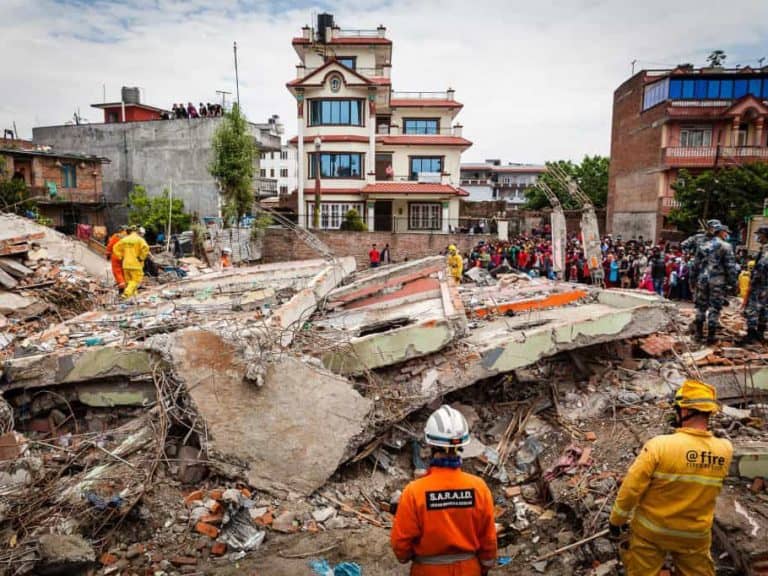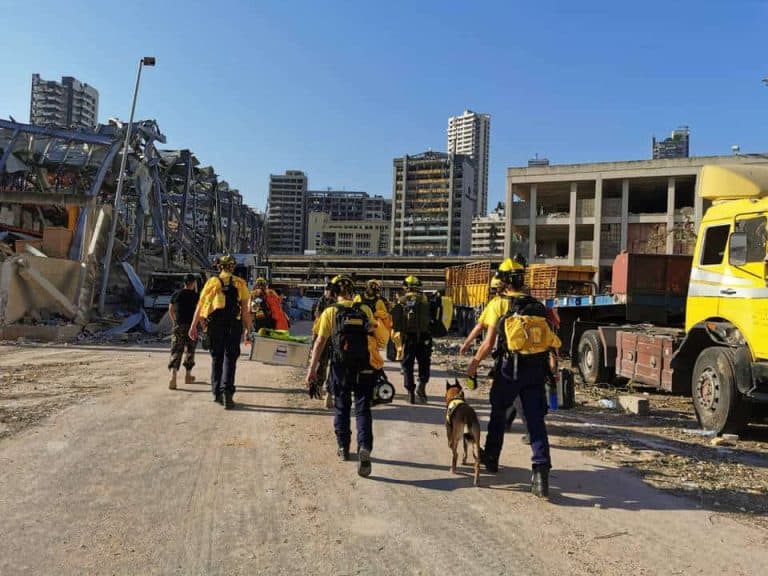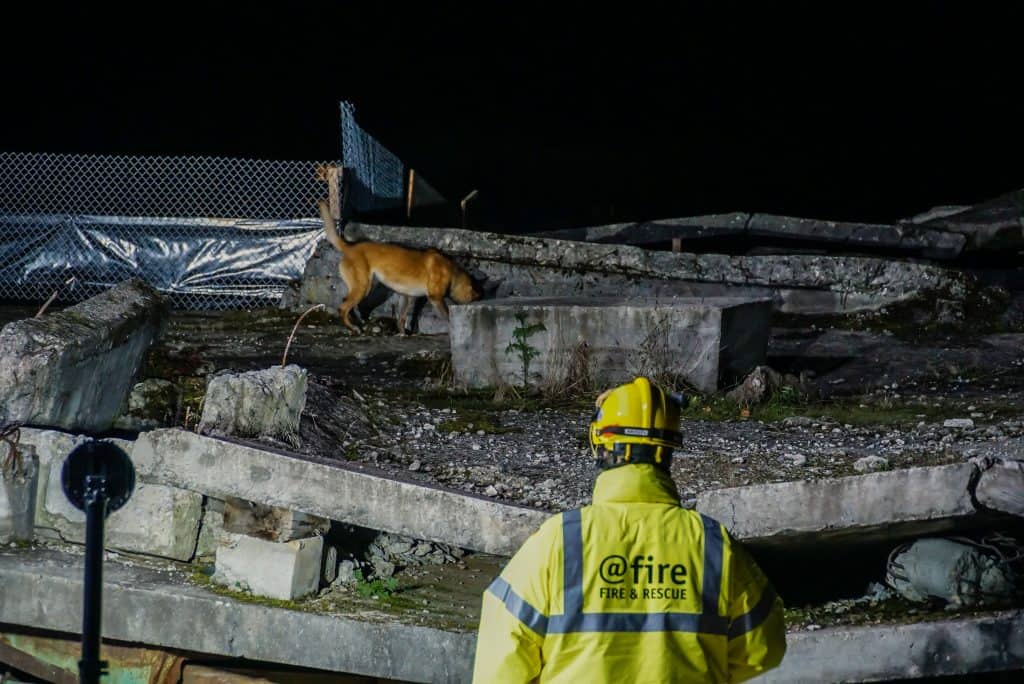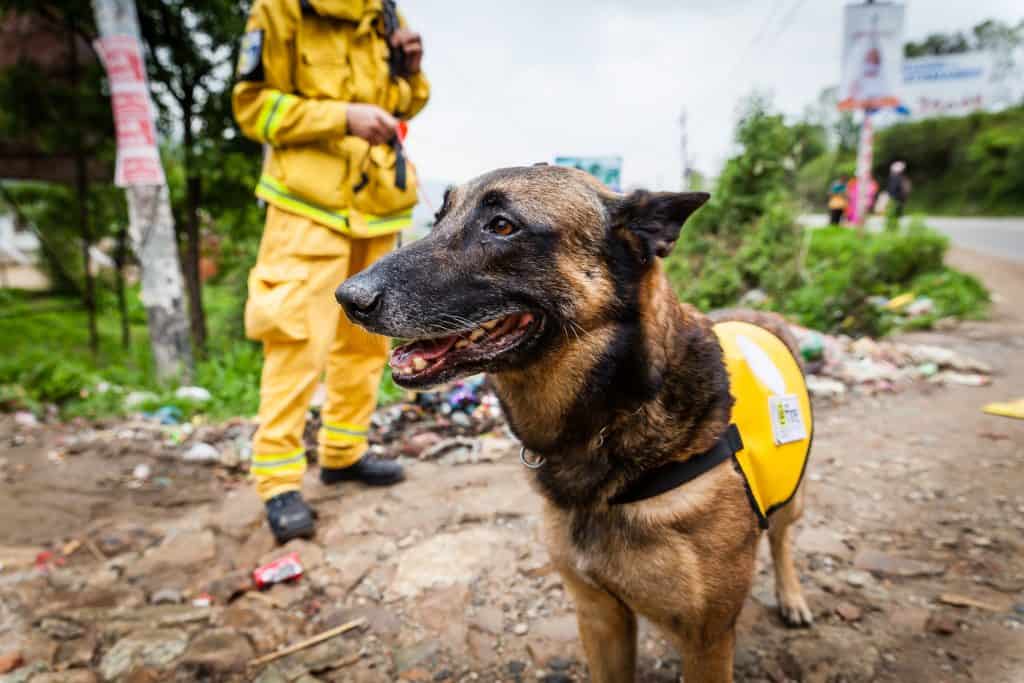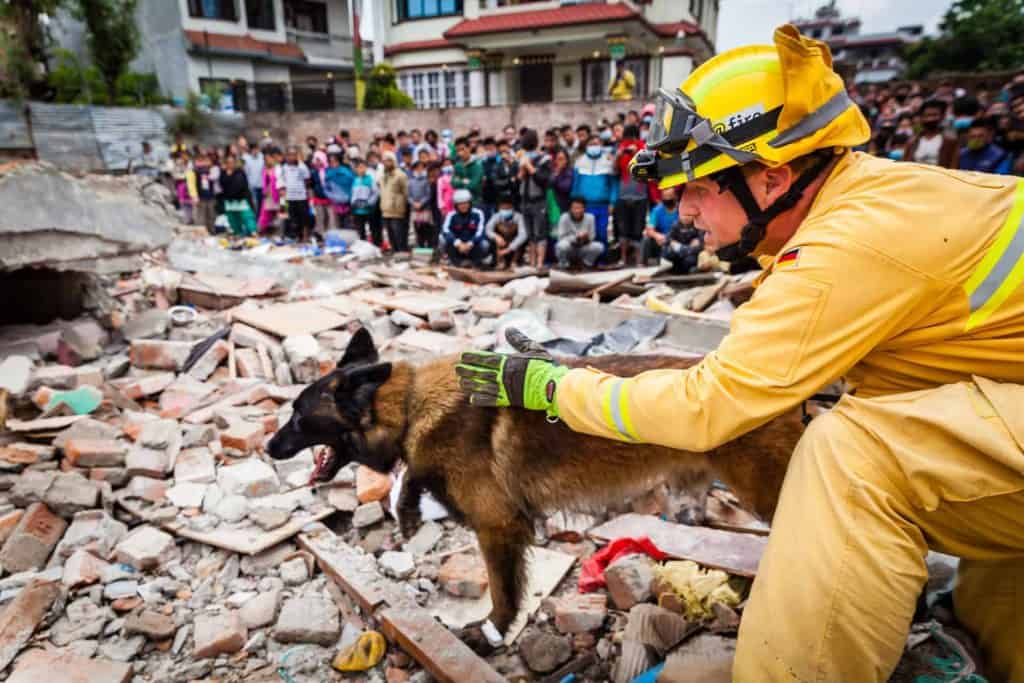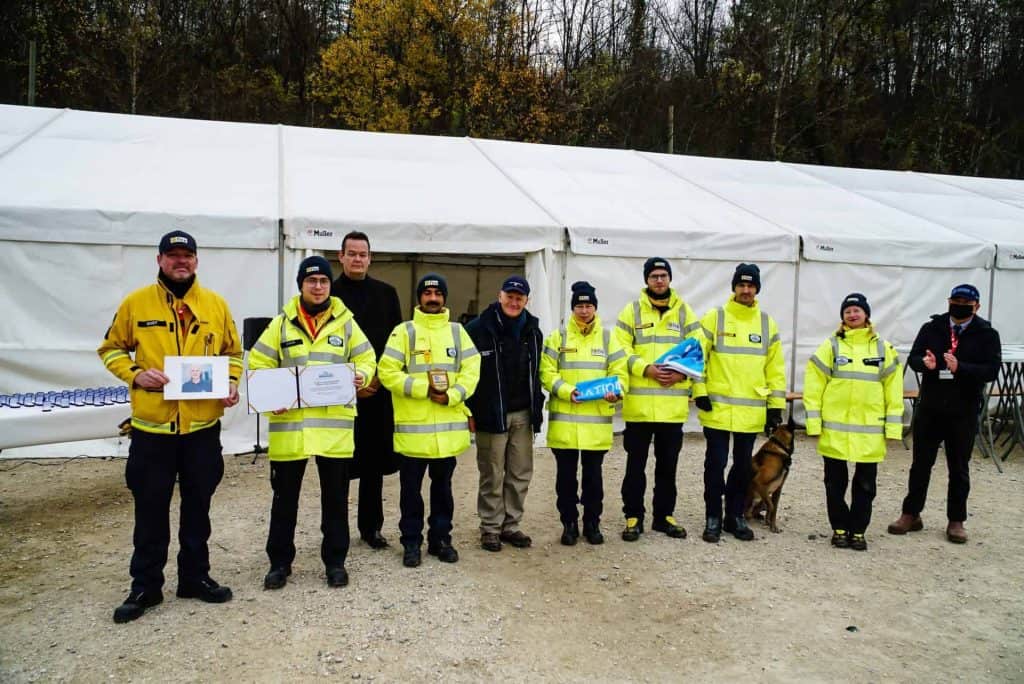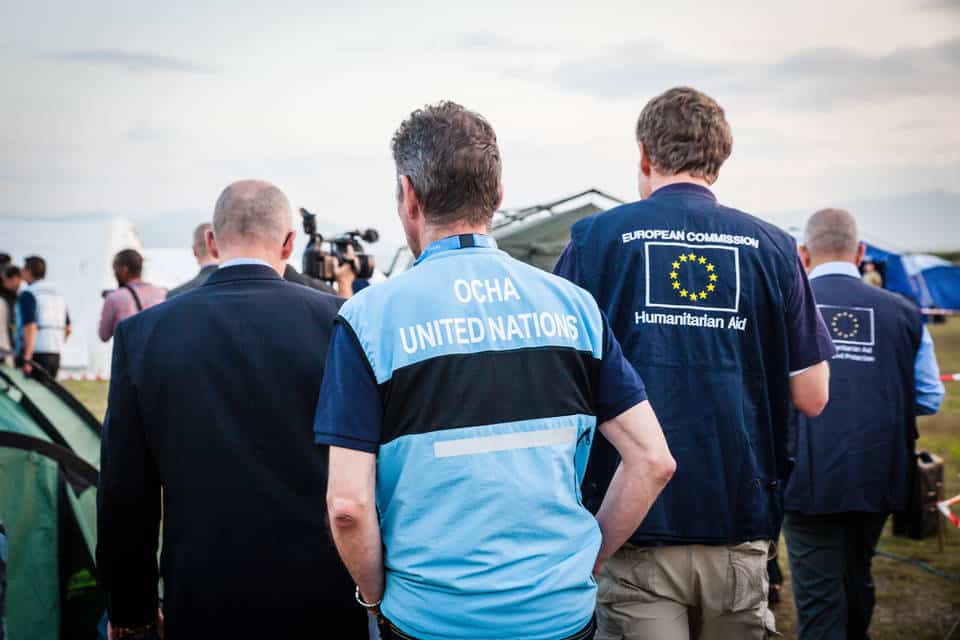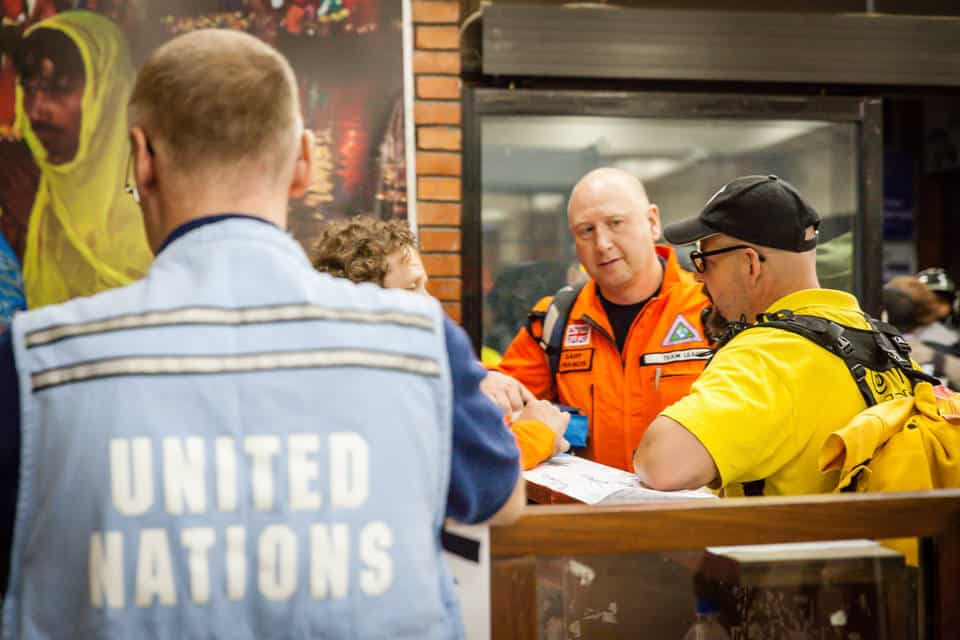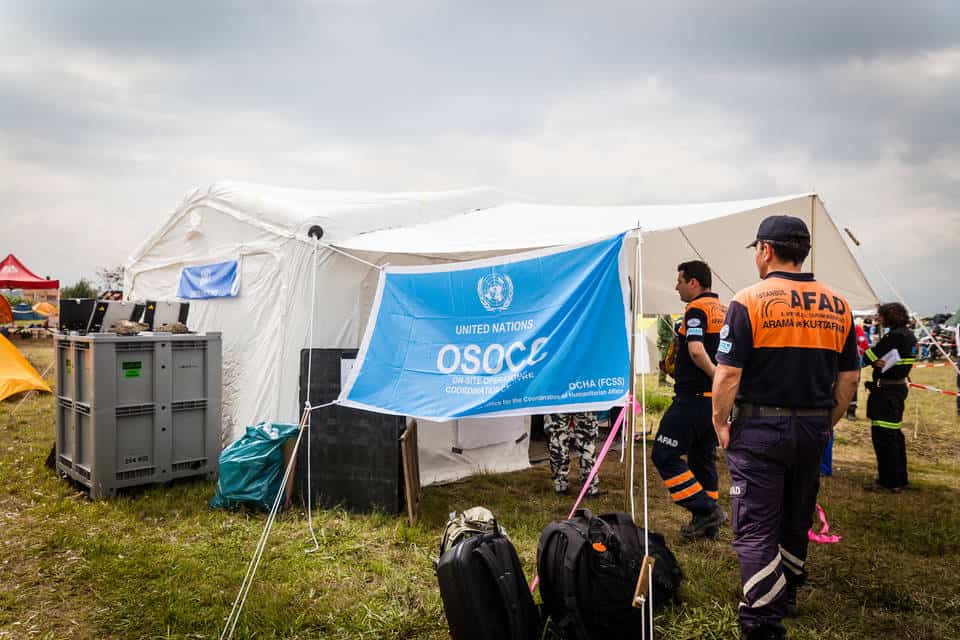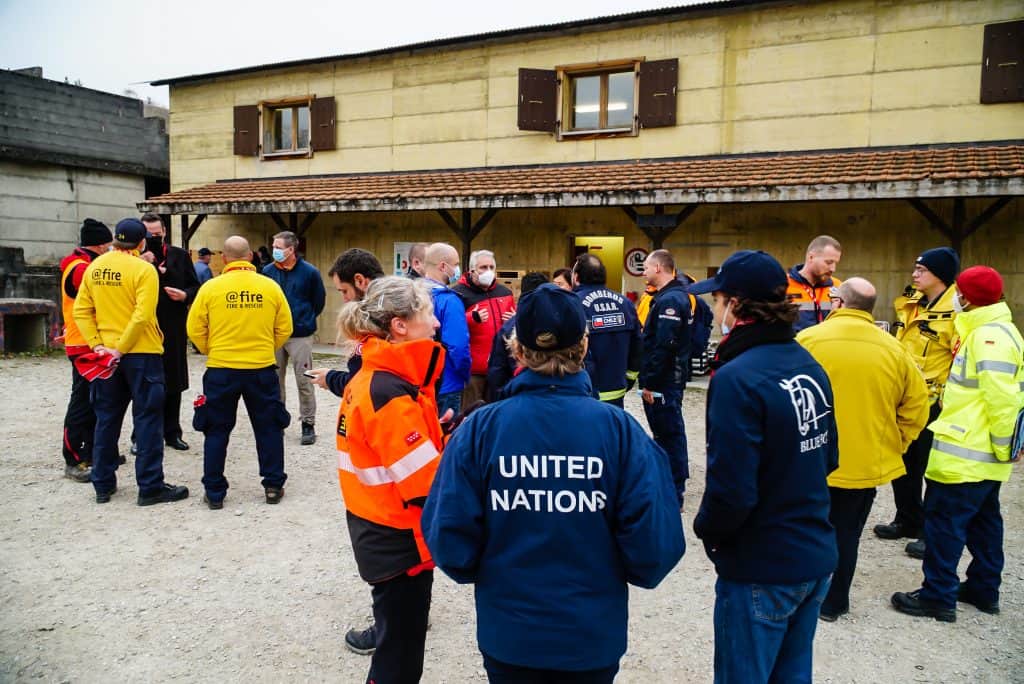When major earthquakes shake and devastate a region of this earth, every hour counts for victims, the injured and the buried. The scale of destruction often exceeds the capacity of local relief workers and requires international assistance.
To rescue people from rubble around the world, @fire’s internationally recognized and certified Light USAR team is ready to deploy at a moment’s notice.
As one of only three German rescue teams and the first certified Light USAR team worldwide, @fire is a member of INSARAG. The International Search and Rescue Advisory Group (INSARAG) was established in 1991 as a subsidiary organization of the United Nations. The tasks of the organization are to develop international cooperation in the field of debris rescue (USAR = Urban Search and Rescue). The main task is the coordination and standardization of international rescue teams. Clear structures, defined capabilities and standardized processes are intended to make international aid more effective and targeted.
Specialty: Rescue of buried victims
The rescue team specializes in locating trapped people in the rubble of collapsed buildings, rescuing them and providing medical care. To this end, @fire has specialized equipment on hand, ranging from tracking devices to recovery equipment to medical equipment. This is air-portable and permanently available for use in a warehouse. By means of elaborate logistics, the team is completely self-sufficient for the entire duration of the assignment and can be deployed worldwide.
@fire is a member of UN INSARAG
To date, the assistance of @fire’s Urban Search and Rescue team has been called upon around the globe for rescue after earthquakes, seaquakes and tsunamis, typhoons, or an explosion as part of United Nations relief operations.
The team is supported in the rescue work by rescue dogs that are specially trained to search in rubble. They sniff out the rough location of a survivor so that an exact position can then be determined by tracking devices and a rescue can be initiated. Medical responders then care for the rescued person until a transfer to another rescue unit or appropriate hospital takes place.
Rescue dogs - An irreplaceable part of the team
The volunteers of @fire have been able to rely on their own rescue dog unit (so-called “K9 Unit”) since 2014. The specially trained search dogs are able to quickly search large-scale debris structures, indicating deeply buried individuals. Thus, the rescue dogs at @fire form an indispensable and professional part in the rescue chain.
Like most of the helpers at @fire, the dog handlers and their rescue dogs perform additional service searching for missing and buried people in other relief organizations all over Germany, in addition to the demanding worldwide disaster relief work. In addition to the national requirements, rescue dogs must also complete additional training sessions and meet the international testing guidelines of the International Rescue Dog Organization (IRO ).
Only operational rescue dog teams are used in international disasters. The @fire teams obtain this qualification through an international operational test conducted by the IRO. This operational test guarantees the worldwide quality standard in a rescue team.
Background: The United Nations INSARAG
Following the major earthquakes in Mexico (1985) and Armenia (1988), the International Search and Rescue Advisory Group (INSARAG) was established within the United Nations Office for the Coordination of Humanitarian Affairs (UN OCHA) in 1991 on the initiative of the international search and rescue teams involved in the operation.
The organisation’s tasks are to improve international cooperation in the field of debris rescue (USAR = Urban Search and Rescue). The main task is the coordination and standardization of international rescue teams. Through clear structures, defined capabilities and uniform processes, international aid should be more effective and targeted.
For example, INSARAG’s guidelines (INSARAG Guidelines) define the staffing levels and competencies of the USAR teams. According to these guidelines, each USAR team consists of five components: management, logistics, search, rescue and medical care. Furthermore, three classification levels (light, medium and heavy) would be created for the search and rescue teams, which differ mainly in terms of personnel strength, mobility and capabilities.
All rescue teams must undergo INSARAG External Classification (IEC) and regular Re-Classification (IER) in one of the three classification levels.
According to INSARAG guidelines, a Light USAR team can carry out search and rescue operations in collapsed buildings made of wood and unreinforced masonry, as well as in buildings reinforced with steel reinforcement. It must also be able to lift, roll, push or hoist debris using a crane, winch or hoist. It must provide medical care for its team members and rescue dogs as well as for the victims encountered, if permitted by the government of the country concerned. Furthermore, a Light USAR team must be able to work self-sufficiently at an operation site for five days for 12 hours at a time and consists of at least 18 emergency personnel.
